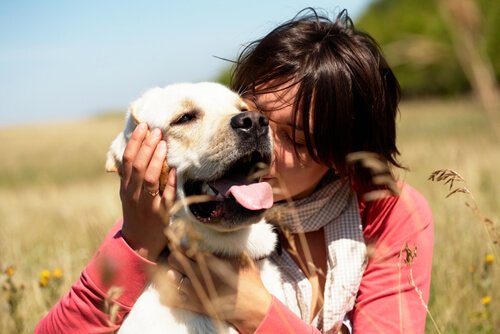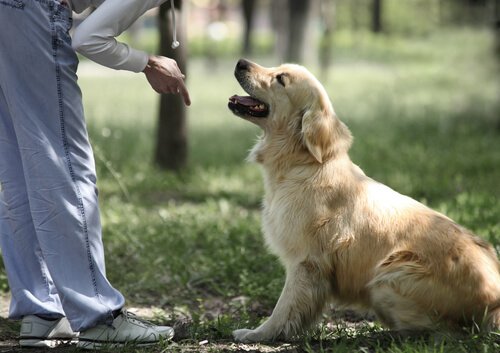How to Understand What Your Dog is Thinking

We must learn how dogs show affection and their way of asking us something. In order for you to understand all this and to get to know your new friend, it is essential to understand what your dog is thinking.
Maybe you’re wondering if it’s possible to understand what your dog is thinking. The answer is yes. Our mind is moved by reasoning, feelings and emotions and therefore it is very difficult to understand why dogs do what they do if we do not understand how they think.
How to understand how your dog thinks

To understand what your dog thinks, you should see how he reacts to your movements. Although there are many actions that all dogs have in common, it is also true that each dog has a mind of his own. For this reason, we will make some generalizations here, but pets may have differences.
Petting
In order to pet your dog in a way that he likes, you have to understand how the animal thinks, and as we told you before, observe what he likes and does not like.
As a general rule, no dog likes to be petted on the tail, legs, ears, and, in some cases, even the head.
Agression
Many dogs are aggressive even in their own homes. This happens because sometimes we think that because dogs are animals, they do not understand us. However, this is not entirely true.
Dogs have the ability to observe and understand our body language. That’s how they can recognize our tone of voice, our gestures and our posture. So they are able to identify whether or not we are comfortable in their presence.
For this reason, the aggression sometimes shown by dogs is often caused by our attitude.
Things you should know in order to understand how your dog thinks
Dogs are very different from humans. Sometimes that’s our biggest mistake: forgetting that fact. Dogs move instinctively, and react according to what they smell and what they are able to feel.
You have to understand that they act according to a hierarchical structure. Therefore, they are always looking for a leader. If you or a member of your family does not show him who the leaders are, he will take that role, which can cause episodes of aggression or anxiety in the animal.
The one who is dominant will always win, so we must be careful not to encourage that attitude. For example, if the animal is tense and we pet it, we will reinforce that behavior. He’ll be aggressive, if not with us, then with other people when they try to touch him.
However, on the contrary, if you pet your dog when he’s afraid, we are telling him that being afraid is fine. When the dog shows emotions, it’s best to leave him alone.

Letting him socialize is a natural thing for him and it will also be very beneficial for him. He’ll become friendly to other dogs and other people.
Strive to understand how your dog thinks, and your bond with him will become even greater!
This text is provided for informational purposes only and does not replace consultation with a professional. If in doubt, consult your specialist.